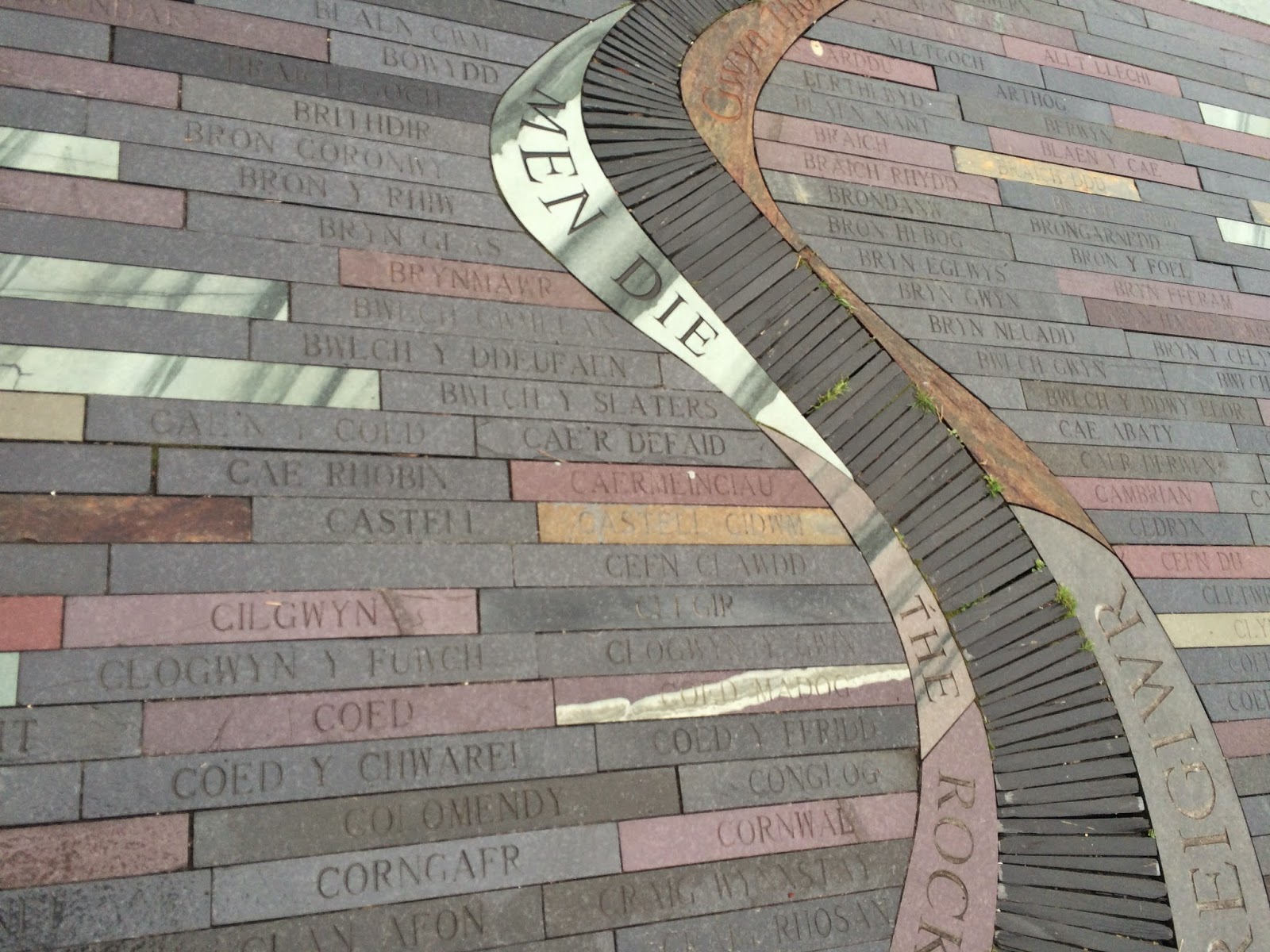Blaenau Ffestiniog has been on my to-visit list ever since I met artist Howard Bowcott at a conference a couple of years ago. I'd seen pictures of the artworks created as part of the town's regeneration project, and wanted to put the work in context.
![]()
Blaenau has been described as the 'hole in the polo mint' of the Snowdonia National Park in Wales, UK. When the park was created, a boundary was drawn around this devastated hub of the now defunct slate-quarrying industry. It was as if there was nothing to celebrate and no reason to go there.
On one level that's understandable. Arriving in Blaenau some years ago might have felt like entering the gates of Mordor: shattered hillsides piled with the remnants of slate mining, shops and pubs struggling to survive.
Today there are still plenty of problems. This is not a rich area.
At the
Seren social enterprise, which provides work in furniture reuse and recycling for people with learning disabilities, one manager comments: 'Recycling is one of the only growth industries in Wales – that and debt collection.' That may be an exaggeration, but it's a heartfelt one.
Blaenau's high street isn't exactly buzzing, though you wouldn't expect that in a small town in a remote part of North Wales on a wet day in April. But by all accounts it's more lively than it was. What's more important is the sense of pride that's evident from local people.
Howard Bowcott and Jim Buckley, leader of the town's
regeneration project, talk enthusiastically about the community's involvement in steering the vision for the town's future and their part in creating the slate artworks, dramatic sculptures that open up the centre of the town and turn previously deserted streets into a focal point.
The sculptures celebrate Blaenau's character, but not in the mawkish style characteristic of many public artworks, the sort of nostalgia in bronze that reminds us how many cities used to work. They reference the town's industrial history, echoing the gradient of the slate deposits and are brought to life with the words of local poets and musicians; but they're distinctly contemporary. Heritage here is about life, not mourning.
![]()
A similar defiance is evident at Antur Stiniog, another social enterprise at the heart of the town, which specialises in mountain biking and outdoor adventure activities. Ceri, the company's manager and a passionate advocate for the town, also sees heritage as something alive: you share it when you take someone for a walk, he says.
It wasn't always like this. This is a town that used to be suspicious of the tourists who swarmed around the national park, resentful of their prosperity. Now, I'm told, on a sunny day you'll find visitors and locals alike sharing the town centre space.
There's a pride that makes people insular, but when people are welcoming it's more than pride: it's confidence.


